Top 10 baits from the California Delta
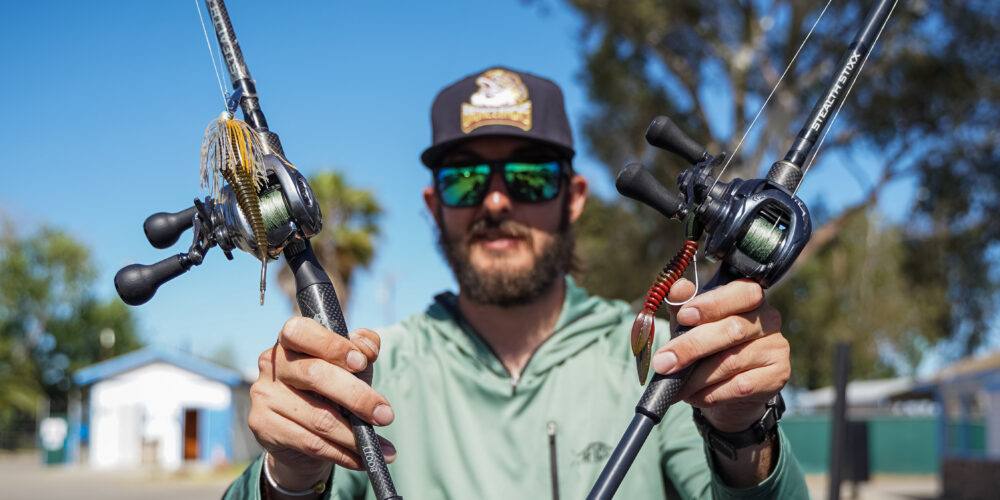
OAKLEY, Calif. — Generating bites wasn’t a problem for the Toyota Series Presented by Phoenix Boats competitors on the California Delta. But, whether due to the warm, sunny weather or a “postspawn funk,” finding the big bass the tidal river system has become known for proved a bit of a challenge.
Those who figured out how to get a few above-average bites each day climbed to the top of the standings. None did so better than Cristian Melton, who capped a dominant year in the Western Division Presented by Tackle Warehouse with a flourish, walking away from the season finale with both his first professional win and the Fishing Clash Angler of the Year title.
Melton and the rest of the top performers relied on the heavy-tackle, grass-oriented staples that have become synonymous with the fishery but mixed in some finesse, too. Here’s how the best in the West got it done on the Delta.
1. Melton rides magic spot to win
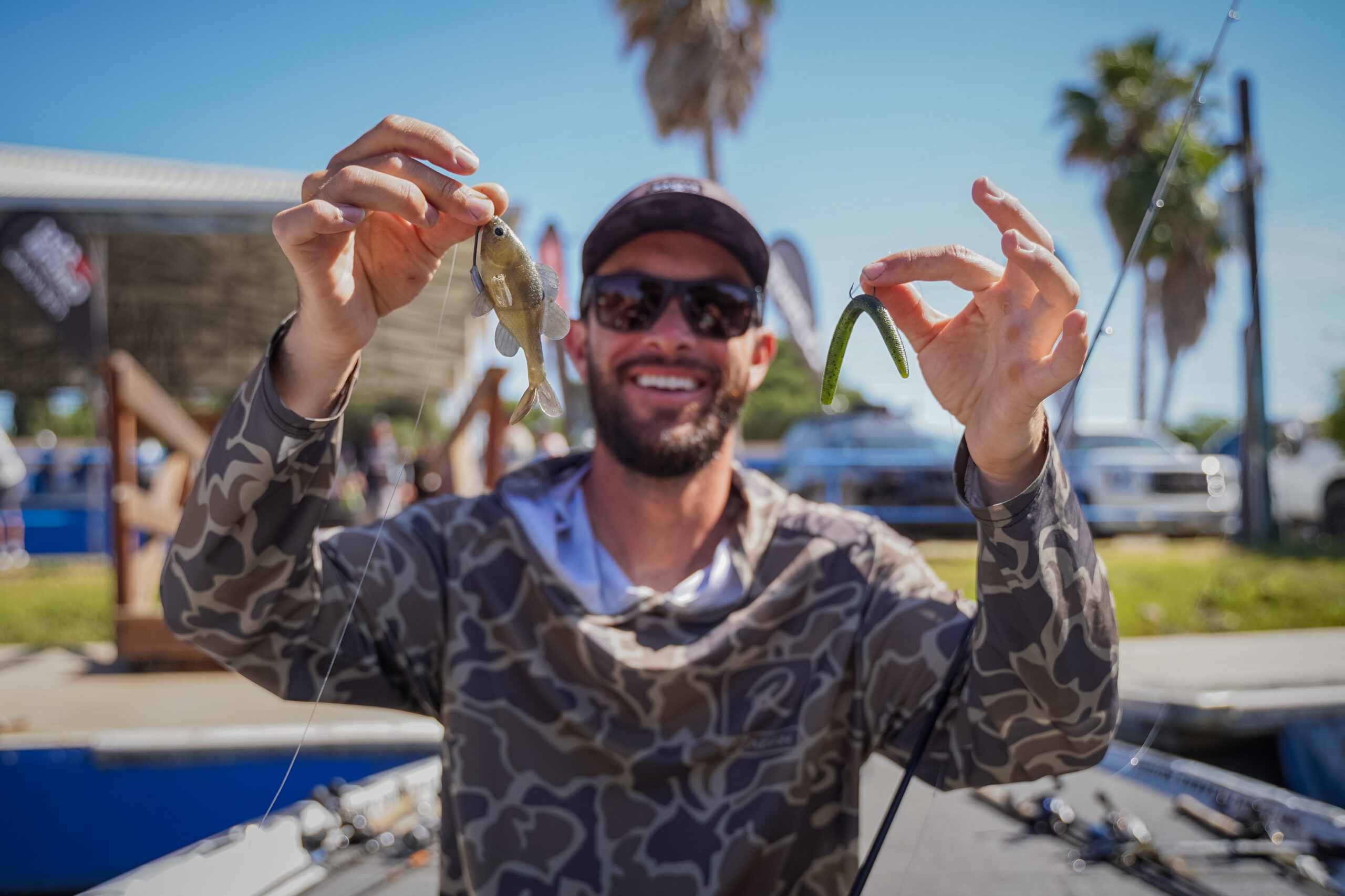
Fishing a series of protected, slack-water pockets in the central San Joaquin River, Melton caught most of his weight on the final two days — both of which saw him stack more than 20 pounds on the scale — from the same spot. Melton believes the area had a mixture of prespawn, spawning and postspawn bass, plus some bluegill beds where bass were feeding.
Melton used reaction baits to cover water, including a squarebill crankbait from 1776 Bait Co., which he credited for helping him find the honey hole.
“The squarebill, that helped me locate some of these fish, because they would chase it,” Melton said. “Either the ChatterBait or that bait, they would chase it and expose themselves. But they would not commit to it; they would spook.”
He wound up catching most of his keepers, including the 8-12 lunker that anchored his final-day bag, on a wacky-rigged Yamamoto Senko. He also used “a couple different baits” to sight-fish a few off beds.
2. Day 2 megabag powers Ostrander
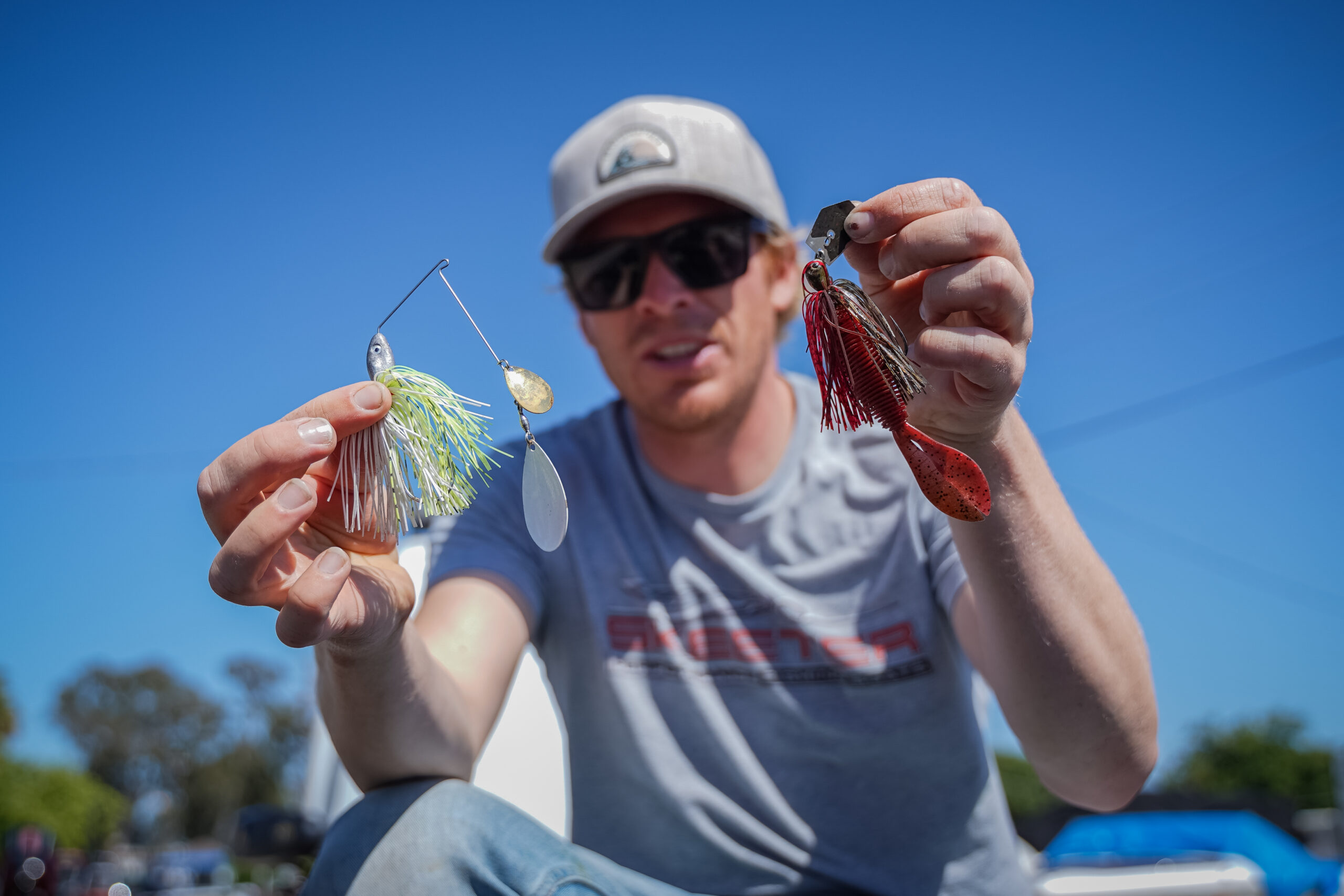
Christian Ostrander finished second with 56-8, largely on the strength of a 24-2 sack on Day 2, the biggest bag of the tournament. He caught a pair of 7-pounders on the day, one on a bladed jig and one flipping.
Those were Ostrander’s top techniques throughout the event, and he also mixed in a spinnerbait. Mostly targeting tules in off-color water in the southern and central reaches of the Delta, Ostrander’s bladed jig of choice was a Z-Man Evergreen ChatterBait JackHammer in Hite’s hot craw with a red Missile Baits D Bomb as a trailer. He flipped a Reaction Innovations Sweet Beaver in either black and blue or black and red with a 1/2-ounce weight. His spinnerbait was a 3/4-ounce, double-Colorado model in white and chartreuse.
3. Brinser fishes his way
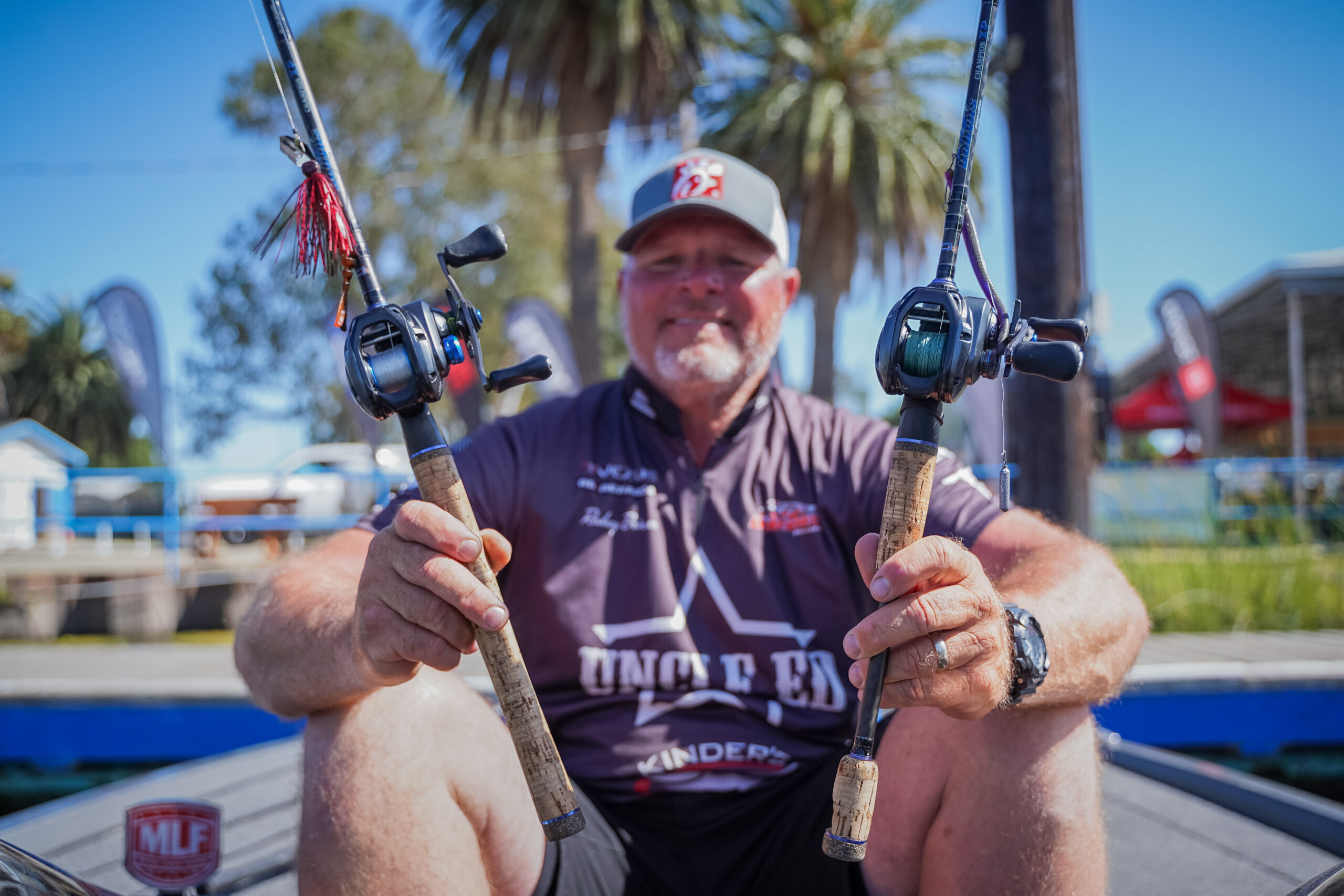
A self-described “drop-shot fanatic,” it was no surprise to see Rodney Brinser leaning heavily on the technique during his third-place showing. The Delta local caught all his fish around sparse grass on either a Roboworm Straight Tail Worm on a drop-shot or a ChatterBait.
Brinser has tailored his drop-shot approach to fit the heavy cover and big bass prevalent in the Delta. He uses a Dobyns Champion XP 702 casting rod with an 8:1 gear ratio Shimano SLX reel spooled with 20-pound PowerPro braid to a 12-pound P-Line Tactical Fluorocarbon leader. He Texas rigs his worm on an Owner Rig’n Hook, opting for the 3/0 size this week after he lost a few fish on his usual 1/0.
As for his bladed jig, Brinser rotated between a JackHammer and a Z-Man ChatterBait Custom, getting more bites on the latter. He paired both with a Yamamoto Zako trailer. Brinser threw his ChatterBaits on a Dobyns Champion XP 736 glass rod with a 6:1 gear ratio SLX and 20-pound fluorocarbon.
4. Valdivia winds around rock

While his two-year run as the Western Division AOY came to an end, David Valdivia put together another strong performance on the Delta, finishing fourth. He did so by bucking the trend. Instead of targeting grass, he caught all his fish with reaction baits around levee rock.
“There wasn’t a lot of guys fishing in that stuff,” Valdivia explained. “A lot of guys were fishing the grass, and I knew there had been a lot of tournaments, so with the pressure, I wanted to find something that was kind of away from that kind of stuff.”
Fishing in 0 to 3 feet of water, Valdivia burned either a Z-Man Evergreen ChatterBait JackHammer or a 1776 Bait Co. squarebill along the rocks. He stuck with crawfish patterns, using fire craw for his ChatterBait with a matching Yamamoto Zako trailer. He threw both baits on 7-foot-4, medium rods built by Performance Tackle on 40-pound braid to 20-pound fluorocarbon.
5. Cobey plays the tides
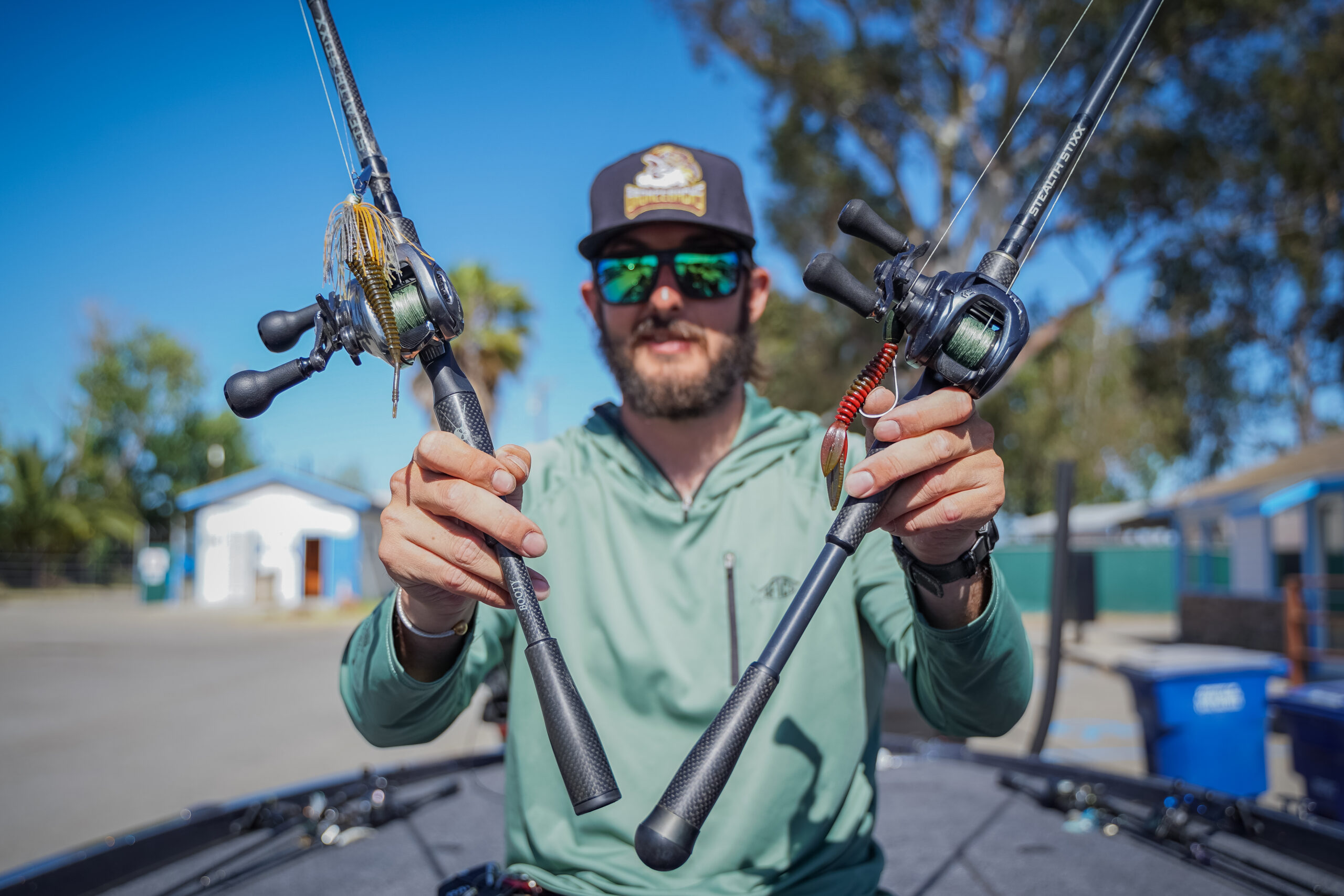
Tide is always a factor on the Delta, and Mark Cobey used it to dictate where he fished en route to his fifth-place finish. Cobey started each morning plying spawning flats with mixed hydrilla and primrose. He believes bass were both spawning and feeding on bluegill in the areas. When the tide was high, he targeted them with a Z-Man Evergreen ChatterBait JackHammer in ghost baby gill paired with a green pumpkin Missile Baits Spunk Shad or a topwater — either a frog or a popper.
As the tide fell, bringing the tops of the grass mats closer to the surface, Cobey continued winding the ChatterBait and mixed in a punch setup. He used a Reaction Innovations Sweet Beaver with either a 1- or 1 1/4-ounce weight and a 4/0 Hayabusa FPP Stright HD. Then, once the tide bottomed out, Cobey would run upriver, where the tide was still outgoing, and do it all again.
“I was fishing kind of central in the morning, then I would run up north as the tide started falling, so I could almost kind of re-catch the tide on what I had just left in the central areas,” he said. “I would say primarily it was just a lot of hydrilla punching and primrose punching and running your ChatterBait in and around those same areas where you’re punching them, and just really, really picking everything as clean as I possibly could. There were high concentrations of fish in these areas; I knew I had to work super hard to get them all out.”
Cobey used a Stealth Stixx Booty rod (7-3, medium heavy, moderate fast) for his ChatterBait and a Punch Drunk model, which is slated to hit the market soon, for his punching.
6. Schlander picks apart key areas
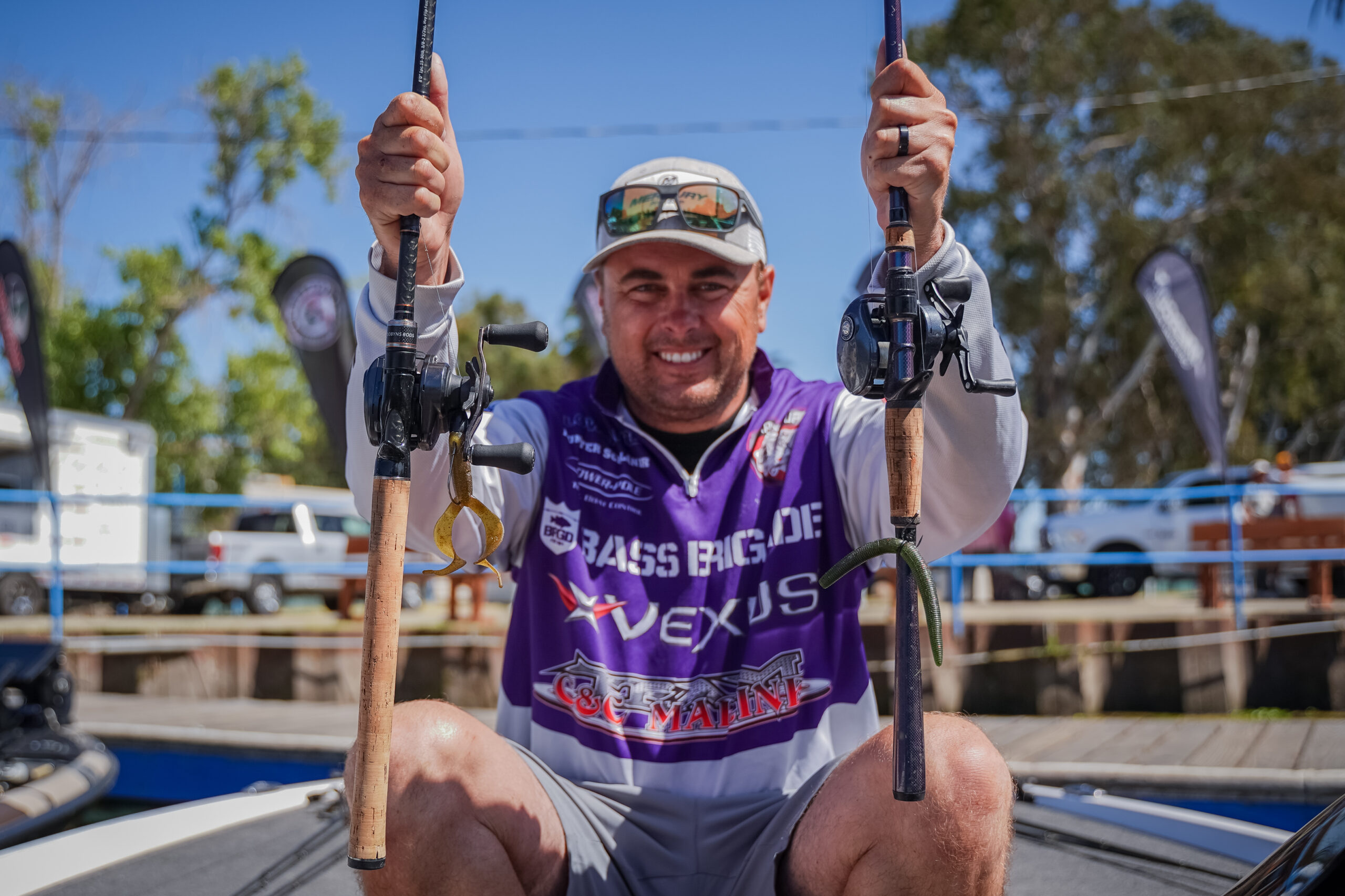
Hunter Schlander found “three or four” stretches of good grass on the southern end of the fishery and milked them for all they were worth. Targeting a mixture of hydrilla and hyacinth mats, he fished slow, switching between different baits based on the density of the cover.
For penetrating the thickest vegetation, Schlander punched a Yamamoto Cowboy in green pumpkin red with a 1 1/2-ounce weight. He also had the same bait rigged with a 1-ounce weight for slightly thinner mats. When he didn’t have to punch through a canopy, he turned to a 1/2-ounce Texas rig with a Reactions Innovations Sweet Beaver, also in green pumpkin red. Lastly, he pitched around a weightless, wacky-rigged 6-inch Yamamoto Senko.
7. Tilbury flips, frogs wood
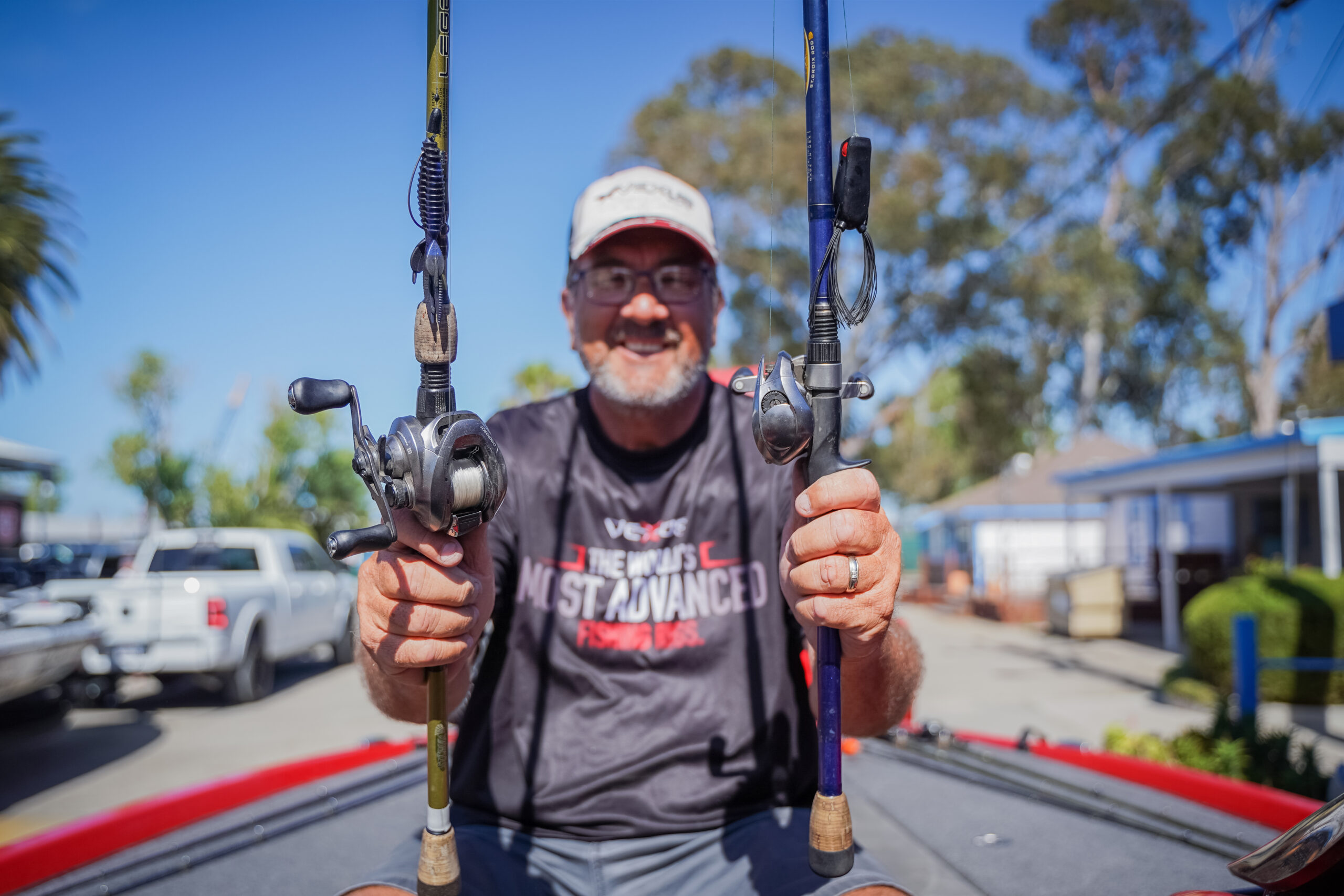
Another angler who found success avoiding the vegetation that most of the field targeted, Phil Tilbury stayed in the central Delta and “looked for anything that had heavy wood on it.” He primarily flipped a Reaction Innovations Sweet Beaver in hematoma on 80-pound braid, but he also mixed in a pair of frogs and a drop-shot.
With two frogs rigged up, Tilbury based his selection on the conditions. During low-light hours and whenever he found a good shade pocket, he’d pick up a black SPRO Bronzeye Poppin’ Frog in the midnight walker color. Other times, he opted for a BOOYAH Poppin’ Pad Crasher in bullfrog.
“That was more my wide-open water frog, looking for holes in the grass, and I would throw that pretty much when I would have straight sunshine,” Tilbury said of the Pad Crasher. “But in the mornings, I’d throw the black in, and anything that I had deep shade on, I would throw the black one.”
Tilbury also caught a few keepers on a drop-shot with a Roboworm Straight Tail Worm in margarita mutilator.
8. Strelic mines special starting spot
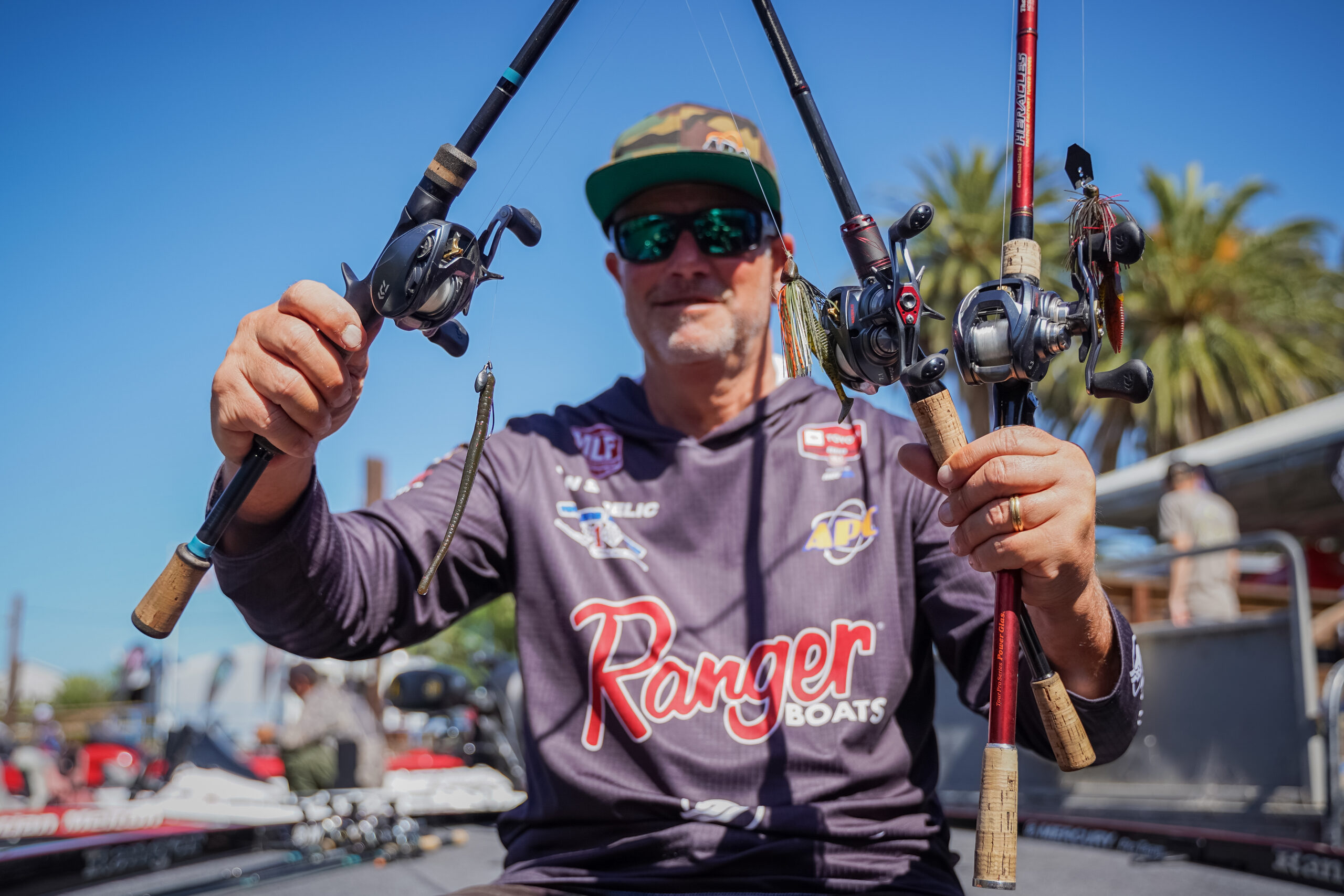
From the sounds of it, Jon Strelic actually found the winning pattern, albeit not Melton’s winning spot. During practice, Strelic discovered a protected area that had “an entire habitat, entire ecosystem living in there.” He initially assumed the bass were all postspawn but realized during the tournament that some were still on beds, while others were guarding fry and feeding on bluegill.
“It was just kind of a great starting spot,” Strelic said. “I kind of fished through that until low tide and started looking around and I see a bunch of bluegill beds, I see a bunch of bass on beds. It was just a perfect setup.”
Strelic started each day of the tournament and caught most of his weight from the spot. When the tide got too low, the fish would get spooky, so he ran south in the afternoons and was able to upgrade his limit targeting “scattered, sparse elodea.” He did most of his damage winding either a ChatterBait or a swim jig. When the wind blew, he used a Z-Man Evergreen ChatterBait JackHammer in Hite’s hot craw, which he paired with a Reaction Innovations Sweet Beaver, swapping it out for an Evergreen Grass Ripper swim jig with a Yamamoto Kickin’ Zako during calmer conditions. He also pitched around a free rig.
Strelic threw his reaction baits on either a Daiwa Steez utility player or an Evergreen Heracles Leopard rod. Regardless, he utilized Daiwa Steez A reels and 20-pound Sunline Sniper fluorocarbon.
9. Fernandes starts fast
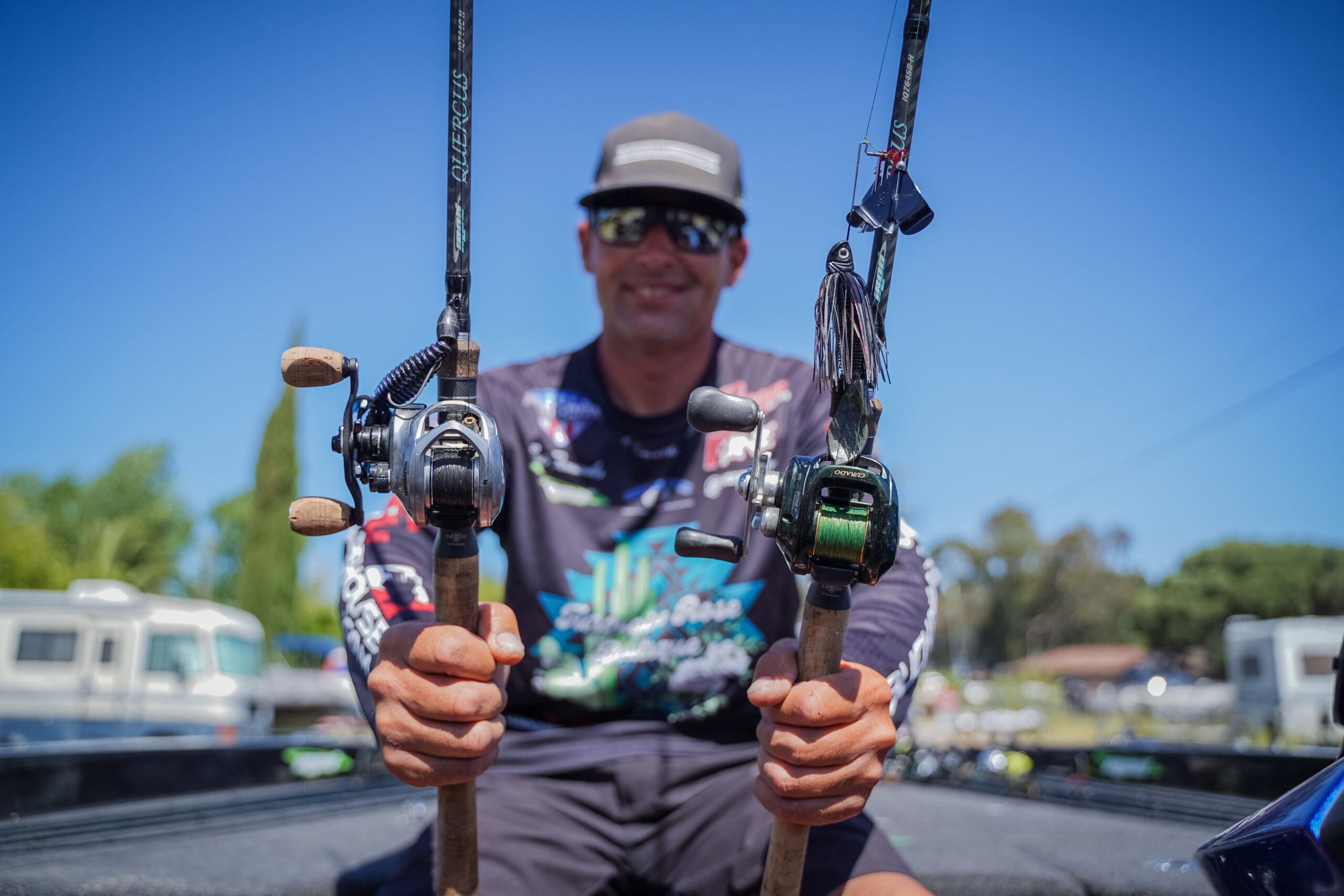
Louis Fernandes claimed the lead after eclipsing 20 pounds on the opening day but could never quite replicate that success. He did his Day 1 damage fishing slow — flipping a Reaction Innovations Sweet Beaver and mixing in a Senko and a drop-shot.
On Days 2 and 3, Fernandes continued to flip and also threw a 1st Gen Copperhead Bladed Jig. He used iRod Quercus Series casting rods and 50-pound P-Line EndurX braid for both presentations.
10. Jones targets canal islands
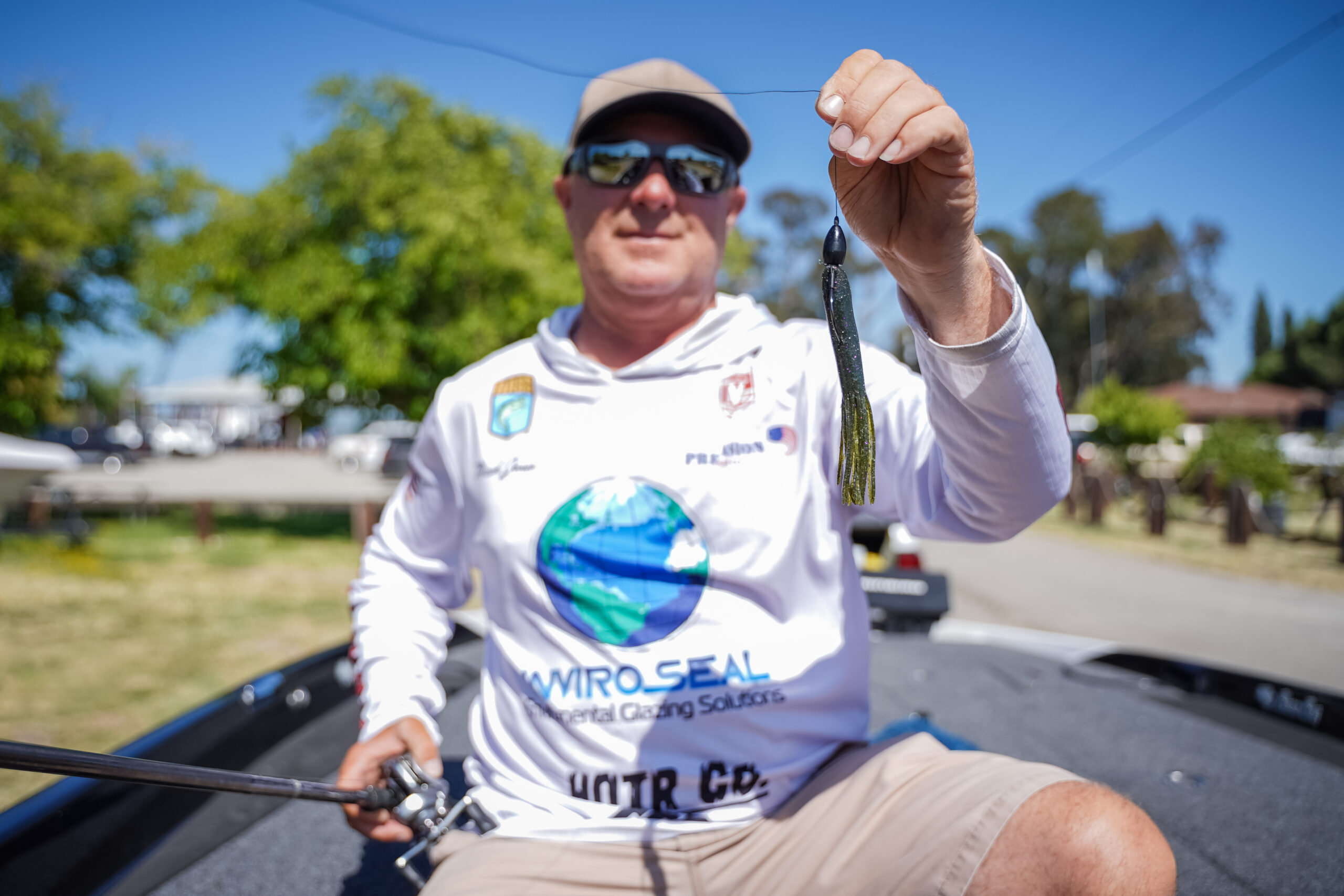
Micah Jones made a long run east to a canal off the San Joaquin River and targeted “any kind of bend in the canal that had some sort of island on it.” To do so, he used a pair of reaction baits and a punch rig.
Jones used a Texas-rigged tube to punch through the tules and other vegetation around the islands. He also rotated between a spinnerbait and a bladed jig, using a green pumpkin ChatterBait with a lava craw Missile Baits Spunk Shad as a trailer. One of a few anglers who noted that the Delta bass seemed to be keying on crayfish, Jones believes the bright red/orange trailer made a difference.
“The non-boaters that fished with me didn’t have that, and they weren’t getting bites, and then I would kind of help them, change them out, and they would start getting bites,” Jones said. “So, it was kind of a key deal.”
After he bagged 14-0 on Day 1 and 17-15 on Day 2, Jones’ bite faltered on Day 3, which he attributed to low tide arriving later in the day. Each day, his bite got better the closer it got to low tide.
“Everything just had to be low tide, and the bite kept getting tougher every day because the tide kept getting later and later on us,” he said.